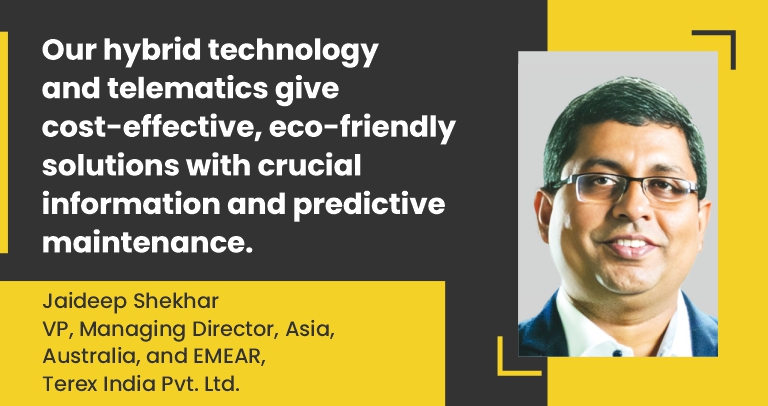Everest is keen to aid India’s high speed railway projects
By Edit Team | February 17, 2020 5:14 am SHARE

Everest has forayed into the heavy machineries segment with the intent of helping India in realising its high speed railway projects says PV Ramdev, Managing Director, Everest Engineering Equipment Pvt Ltd.
How was your experience at Excon 2019? What products did you display?
We were quite happy with the response that we received at Excon 2019. At the fair we displayed the men and material hoist, passenger hoist and rack and pinion construction platforms which GJJ invented after decades of doing their R&D.
GJJ is the leader in high speed, medium speed and low speed hoists in the world market with a total population of about 64,000 units. GJJ eliminated the trailing power cables and innovated special bidirectional BUSBARS successfully. GJJ utilises the NORD Mechanism along with Siemens VFD.
The speeds specified in GJJ catalogues are the true speed achieved with full load. GJJ can offer 46m/min, 63m/min, 96m/min, and even 120m/min (2m/sec) hoist according to the height of building. These hoists can be used for 20 years without any major troubles/maintenance. That is the advantage and reliability of GJJ hoist to become the preferred brand for the contractors. Today, every construction like multi-storey buildings, cement, steel, power plants, refinery etc. are planned in fast track and need such machineries to achieve targets on time.
What are your plans for 2020?
Everest is foraying into the heavy machineries segment which includes straddle carriers, gantry cranes, segment transporters and segment launchers from 100t to 1200t. We have decided to foray into this segment keeping in mind India’s focus on high speed railway projects, Metro projects and bridges.
One of the dream projects of the existing government is the 240 km Mumbai – Ahmedabad bullet train project. To be able to realise this dream heavy machines will be required. Likewise these machines will also find immense use in construction of the metro rail projects and big flyovers.
Do you believe that there will be cost advantages once you start manufacturing in India?
The cost of logistics will come down and then 7.5 per cent custom duty can also be eliminated. The manufacturing cost in China is also a bit higher than India now. Though the price of land, electricity and water is subsidised in China, the price of skilled workers is almost double as compared to India. So once we start manufacturing in India, I can promise to our existing and future customers that the price of our indigenously manufactured products will be less as compared to the existing price tag.
When it comes to your financial performance in 2019, what is your take?
We are closing this financial year with a hike of around 20-25 per cent turnover and we expect another 20 per cent increase in the next financial year. All things said, we also have to take into account the upcoming budget and the plans government has in mind. But I do believe that the government is focused on the construction and infrastructure segment and the sector will witness growth.
How do you see the availability of skilled workers and the role of automation in the construction sector?
Automation is necessary for the industry. It reduces the downtime of the machineries and increases the productivity. It also saves electricity and fuel consumption. But at the same time it is necessary to develop the skilled manpower and maintain such advanced technologies at work, which we are doing continuously.
PV Ramdev, Managing Director, Everest Engineering Equipment Pvt Ltd
Cookie Consent
We use cookies to personalize your experience. By continuing to visit this website you agree to our Terms & Conditions, Privacy Policy and Cookie Policy.




































-20240213125207.png)

























